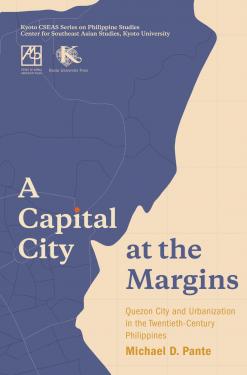
Quezon City served as the Philippines’s capital for almost three decades (1948–1976), yet Filipinos today barely remember this historical fact. Was the city, therefore, a failure? This book answers this question by presenting an unconventional historical geography of twentieth-century Quezon City, one that focuses not on its grandiose architecture and master plan but on its boundaries, peripheries, and marginal areas. In so doing, it shows how the city functioned as a buffer zone mediating between city and countryside, and thus developed due to the urban–rural overlaps inherent in sociohistorical forces such as colonialism, revolution, agrarian unrest, decolonization, migration, and authoritarianism. Not quite Manila-centric, this book is twentieth-century Philippine history from an off-center point of view.
Michael D. Pante is an assistant professor at the Department of History, Ateneo de Manila University, and the associate editor of Philippine Studies: Historical and Ethnographic Viewpoints. This book is based on the dissertation he submitted to the Graduate School of Asian and African Area Studies, Kyoto University.
Published in 2019.




